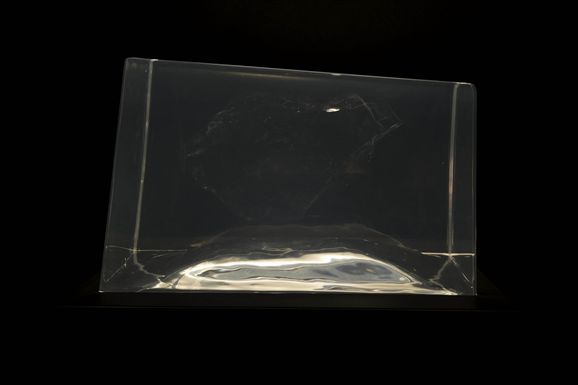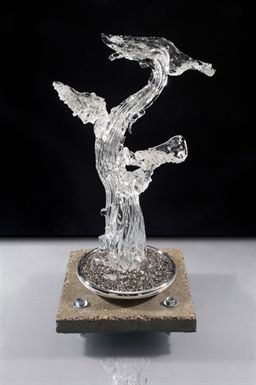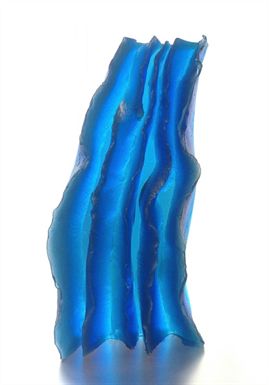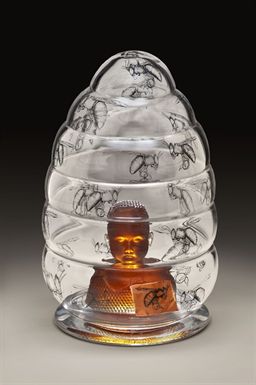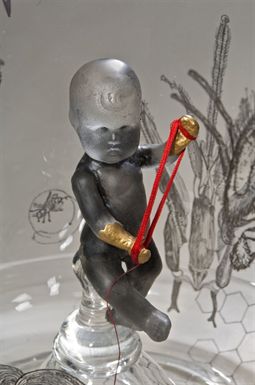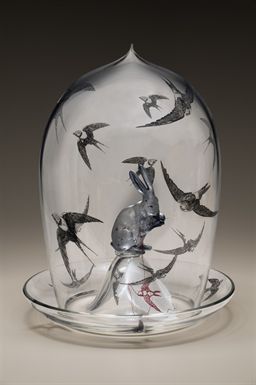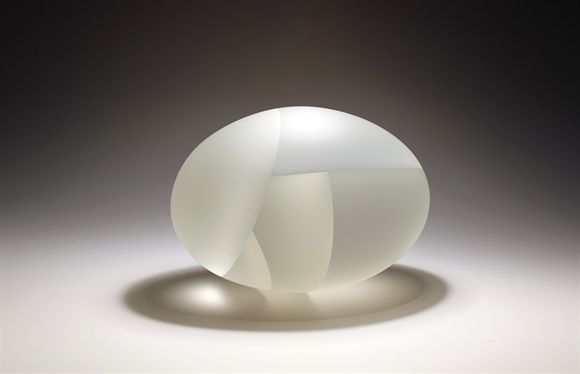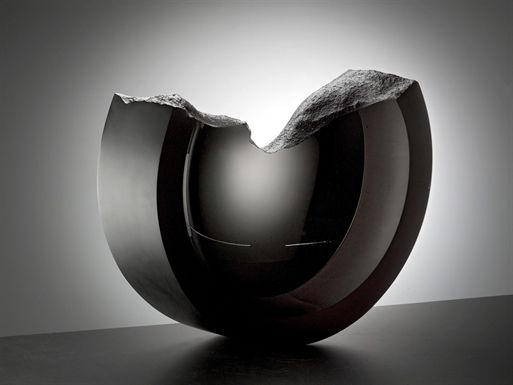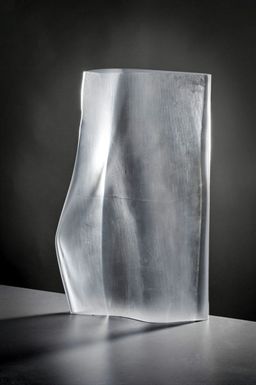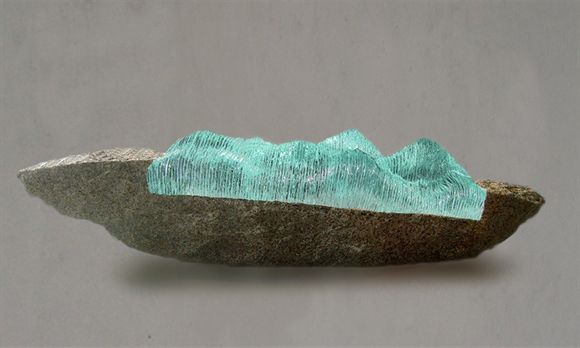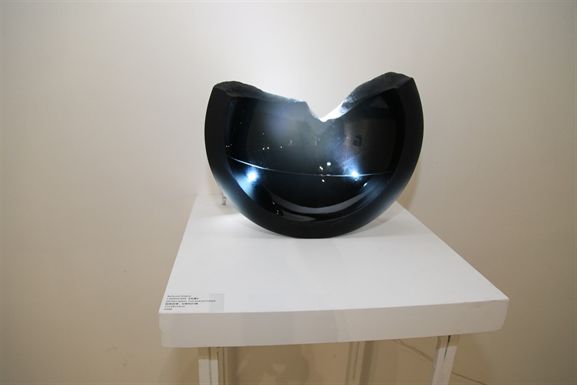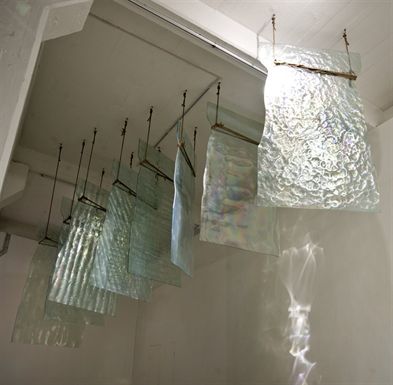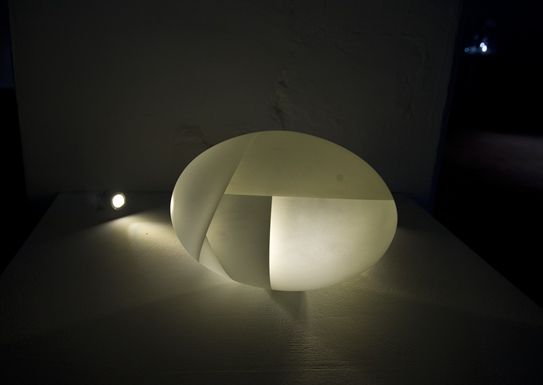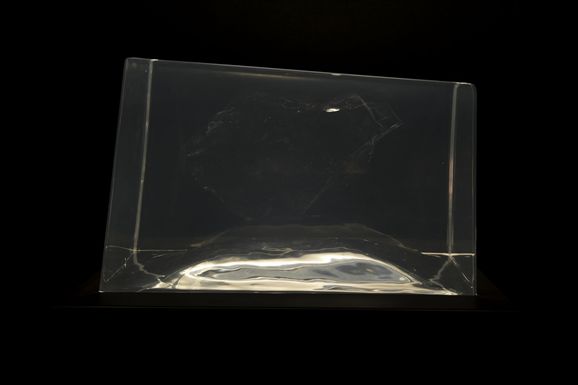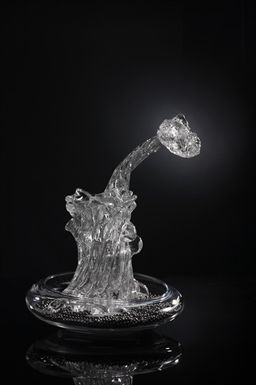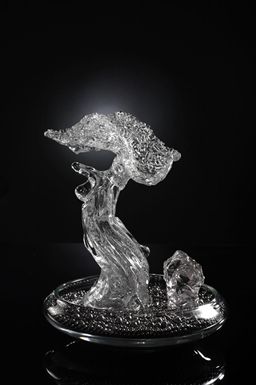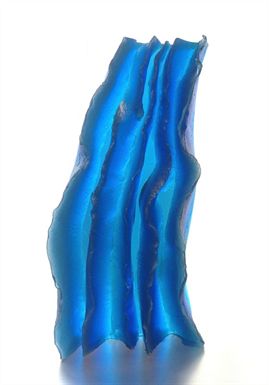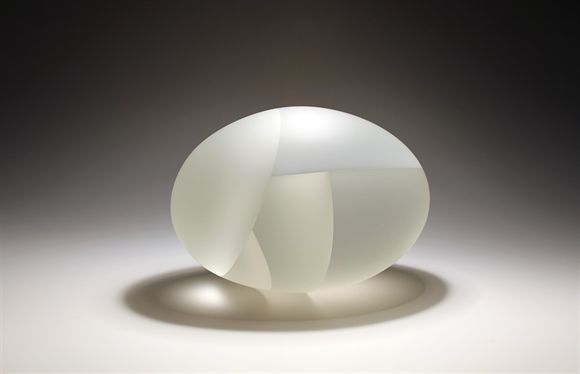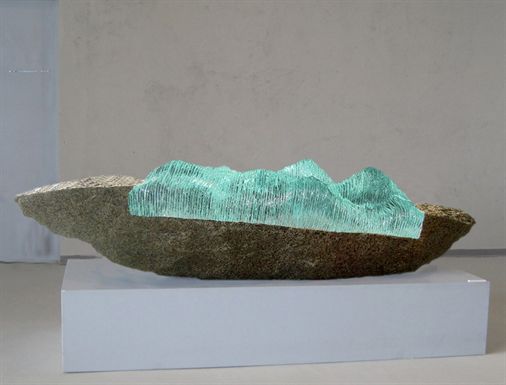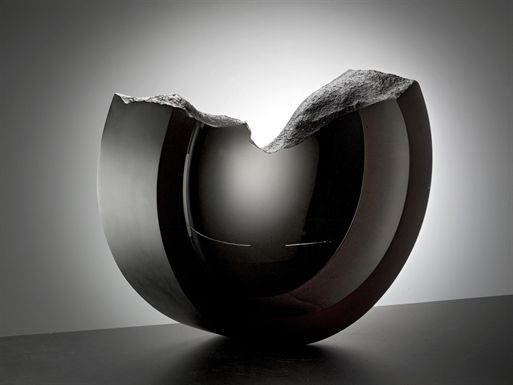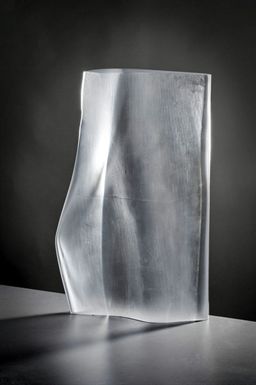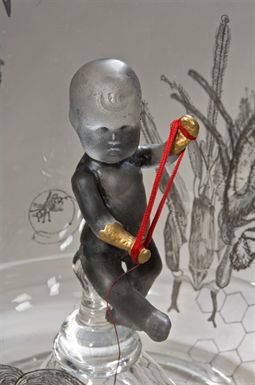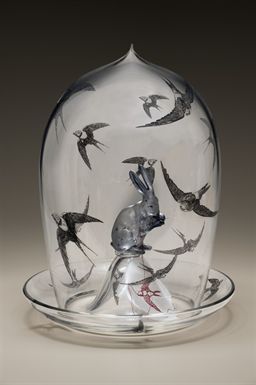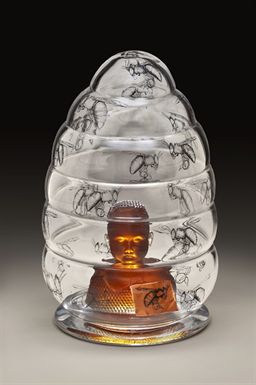"Stripping" International Contemporary Glass Art Invitational Exhibition
Aug 10 - Sep 10, 2013
Aug 10 - Sep 10, 2013
Press Release
Stripping, which stresses a state and process, is a separation method from the edge of the interface; however, Glass is the amorphous substance, a solid without crystallization after melting and cooling.
The exhibition aims to take the substance "Glass" as the curatorial club and final presentation, and leave the metaphysical thinking to twenty artists who have a unique perspective and grasp force about the conceptions and materials in contemporary art field. Then we will see how they get rid of psychological inertia from substances under the condition of the same material’s limit and similar focal point about the materialization, and strip the concept of glass to make their works exude a kind of unique atmosphere. So they could excavate and reconstruct more possibilities about physical materials, and then expand the value reconstruction of physical properties in contemporary art.
"Stripping" has the similar pronunciation with “Glass” in Chinese, so we hope use it to reach our imagination about this exhibition temperament.
"Stripping" International Contemporary Glass Art Invitational Exhibition will display on August 10 - September 10 at White Box Museum of Art which is hosted by White Box Museum of Art and CAFA Glass Arts Centre. Most of the works are designed specifically for this exhibition. We will simultaneously public the albums. One is recording the artists’ creating process and creative ideas in the form of documents and images, and the second is making background stories about "glass" to tell about its past and present.
CURATOR: Bert Van Loo, Lu Zhengyuan
PRESENTED BY: Sun Yongzeng
EXHIBITION DIRECTOR: Liu Chenya
EXHIBITION COOPERATION: Cao Maochao
ORGANIZER: White Box Museum of Art / Contemporary Glass Art Center at Academy of Fine Arts (CAFA)
OPENING: 4pm, 10th of August, 2013
DATE: August 10- September 10, 2013
MUSEUM OPENING HOURS: 10:00- 18:00, Tuesday- Sunday
VENUE: WHITE BOX MUSEUM OF ART, 798 Art Dist., NO.2 Jiu Xianqiao Road, Chaoyang Dist., Beijing, China
T: +86-10-5978 4800
Website: www.798whitebox.com
Curator Article
Lu Zhengyuan
One hundred years ago, Marcel Duchamp painted on the glass, and named the work as "Big Glass (The Large Glass)". He hoped to get rid of the traditional concept completely through this work, to explore a completely different way, and to reach the aim of anti-painting and escaping drawing. In the "Big glass", materials, techniques, display mode, etc. all elements were serving for the concept. For Duchamp, choosing the medium glass is just a method which makes him completely irrelevant with the past. Since then, the implantation of contemporary concept makes the using of the material become more and more rational and be obedient to the notion. Assuming that creation is chemical process from A to B, and the medium is C. Then in the current context, the relatively advanced and popular pattern is: A is the concept, B is the appearance, and C must exist. C may be a single element, or the combination of variety of materials, but what it’s is no more so important.
For the glass, there is alternative creative way which belongs to the category of technique art. The process from C to B is essential; namely manufacture technique is the most valuable part for it is related to the presented effect of B. This effect takes "Beauty" or "ugly" as the evaluation criteria. During this process, and along with his grasp of the character of C, the creator blends the technique with his attitude towards the age, culture, and fashion, aesthetic. I must say that B also has been given a corresponding concept here, although on the basis of expressing ideas, the appeal to the “beauty ”of the material is still not been given up.
That is to say, although the "Big glass" was one of Duchamp's most important works, it will not be written into glass art history.
Traditionally, these two kinds of works are opposed. The trend of the evolution of contemporary art saw that the mode of thinking, such as whether it could get a metaphysical conclusion and express some meaning, or on the group of certain concept, almost dominated the contemporary art history. From a criticism or a work to a large exhibition to the trends for a time, the purpose has become an entrenched standard of value. In a sense, this results in contemporary art reaching the extreme in exploring a certain methodological direction. But it is undeniable that no matter what kind of context or show of one work both are inseparable from the role of various materials. Even, historical experience suggests that the way of using materials entirely creates a different art time. Today, the material boundary is close to infinite. It can be visible or also invisible; it can be inorganic and also organism; it can be an element and also ready-made; it can be a single and also integrated. Could we get beyond the appeal to the “beauty”of the material, and never treat the material as an object served to the concept. What we should do is just returning to the materials, and starting from the material to perceive it, and to discover its possibility in the name of creating. When we strike the accustomed material properties definition, the non-political deconstruction of opposed structures in previous creative modes, is just like every moment in history that getting inspiration from the "creative materials,", then erupting arts revolution.
All materials are equal. Choosing glass as the starting point of this exhibition, just as Duchamp chose glass then, is not only from accidental touch, but deliberate. We can say that the glass is a kind of the state materials which is visible, and the most general, universal, most widely used, and most easily to get today; in a word, it is so common enough that you may neglect its appearance characteristic, or its significance to a particular object. Up to today, according to the different components, as well as different production processes and performance, glass can be divided into about dozens of species, and involved in all aspects of housing, food and drink. You can’t sleep without windows as I wouldn’t type without glasses.
Despite as daily users, we can ignore glass’s characteristics as the material, but when you use it as a medium, or consider in the art context, you would not ignore the natural, charming qualities stemming from material itself. In casting glass, for instance, the variation of light refraction due to the thickness of the glass; color flow during the fusion of glass frit, or the wonderful contrast between polished and rough surfaces of glass.
What comes to mind when people are attracted to visual and tactile generated by these light, color, shadow? Glass wall of the Western Han Dynasty; Buddhist beads clothes; Glass rod in the 13th century bc; Talisman; Dermatoglyph bottles of ancient Egypt; Pharaoh head; Roman mosaic glass bottles; Glass mosaics of medieval Europe; Stained glass windows of the Gothic church; Wrapping glass of Qing Dynasty; colored woodcut glass and snuff-bottle, as well as modern innovatory Bohemia style Glass, Rojez Glass, Aalto Glass, Orrefors Glass...... Here, the glass is given a historical meaning that embedded in everyone’s common sense.
When we plaint its antiquity and narrativity. The "new" of the material by contrast, is sought after by people today. The "new" always relates to abstraction, and from the creative experience, the new material can be used without scruple to increase creation itself breakthroughs and innovations. Conversely, creating with the "old" material glass——to realize its invisible and ubiquitous beauty, to appreciate the charm of the material itself, to trace its origin; and how to get along with the impression of the preconceived notions in sociology, history, function——have become a especially challenging and interesting thing.
There are so many layers to be tapped about glass, so we position the exhibition as invitational exhibition, and invite the artists who can be trusted in grasping the material. We will leave the freedom of creating and selecting works to artists in maximum degree, while not control or coordinate these works’ exhibition system. We are very looking forward to this exhibition, because the background is pluralistic when artists accept the material, and the previous creation is full of individualism, thus there are different understanding position and work style in analyzing, stripping, restructuring and switching the vision and material resources. The artists are from 20 to 60 years old, and work and live in several continents. There are significant differences between them. For example, this is the first time for someone to create with glass, while others are professional glass art workers. Or some artists are particularly concerned about the use of materials and forms in past creations, while others are more emphasis on the expression of material and ideas. Such as Sui Jianguo's work continues his creation clue of sculpture physical space perception, and is again responding to the issue of "When vision is pulled out, whether the space could be perceived " in his "blind portrait"; Zhan Wang's "hidden stone" has conveyed his traditional humanism feelings, but also into his grand understanding of microcosm in the latest solo exhibition; Wu Yongping's new work is through the combination of nearly ten thousands of cells’ morphology to construct the romantic imagination of the exhibition space; the blood collected makes Tang Yuhan’s work reveals a sense of fragility; Zhao Long, a jewelry designer before, use inlaid way to show a walnut so that you would forget the original appearance itself; Li Feng is still persistent infatuated with the material texture and form; Jiyong Lee is on interested in cell and scientific, so his work applies cold technology, to cut, grind the presenting cells, and to perform glass texture between transparent and translucent; Inguna Audere’s work create visual metaphors with glass to contact the relationship among humans, goods, time, and nature, and explore their similarity; Martin blank create a large glass thermoplastic, including the body and abstract sculpture, and he thinks good works like music, which could make people feel its rhythm, etc.
Glass has the same pronunciation with “Stripping” in Chinese, so we name the exhibition with the homophonic, because such a separation method, a state and a process that starting from the edge of interface, just maps our imagination on exhibition temperament. Since the beginning of "Stripping", inevitably, the expectation of avoiding the traditional "glass" definition, has just been enlarged and emphasized in certain artists’ individual creation, and become a focus of their works But it seems not so important. Just as a material class in college, when facing the real material, people could start from the most basic questions again.
Artist:
-
Zora Palová
Installation View
Artworks
- Bohumil Eliáš jr_ LANDSCAPE _Molten glass cut and polished_ 37x48x14cm_ 2008
Media Report

